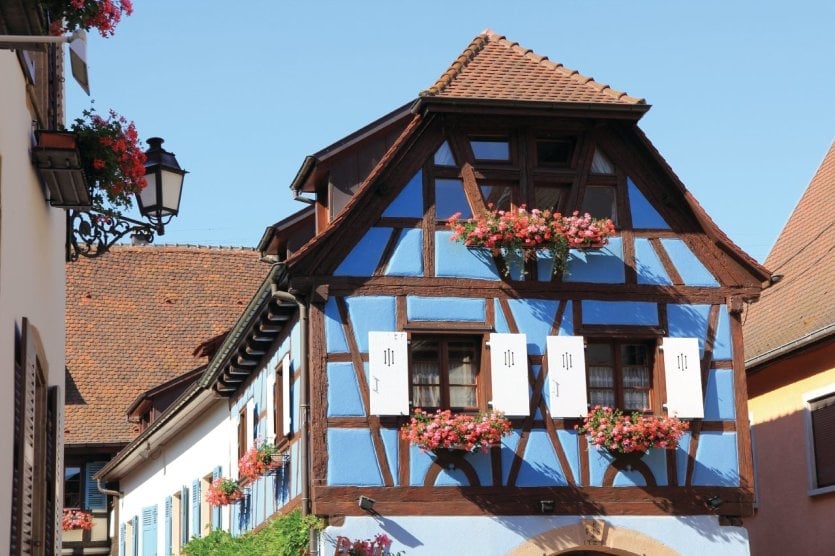
On the border between France and Germany,Alsace offers a wide range of tourist activities. Its villages and towns are renowned for their originality and beauty in all 4 corners of the globe: medieval half-timbered houses, flower-filled wells and windowsills, ancient legends and a warm atmosphere. In this article, we take you on a tour of the ten most beautiful villages and towns in this enchanting region. Lost in the vineyards of the Grands Crus, they offer unique landscapes and heritage that will have no difficulty in seducing you, whether in the Haut-Rhin or the Bas-Rhin. From the capital Strasbourg to Hunawhir and Thann, Alsace offers you its most beautiful villages and majestic towns. Prepare to be amazed by the richness of this heritage and plunge into landscapes that seem to have come straight out of a fairy tale. So make yourself comfortable and let yourself be enchanted by the magic of Alsace's fifteen most beautiful villages (and towns).
1. Eguisheim, a typical Alsatian village
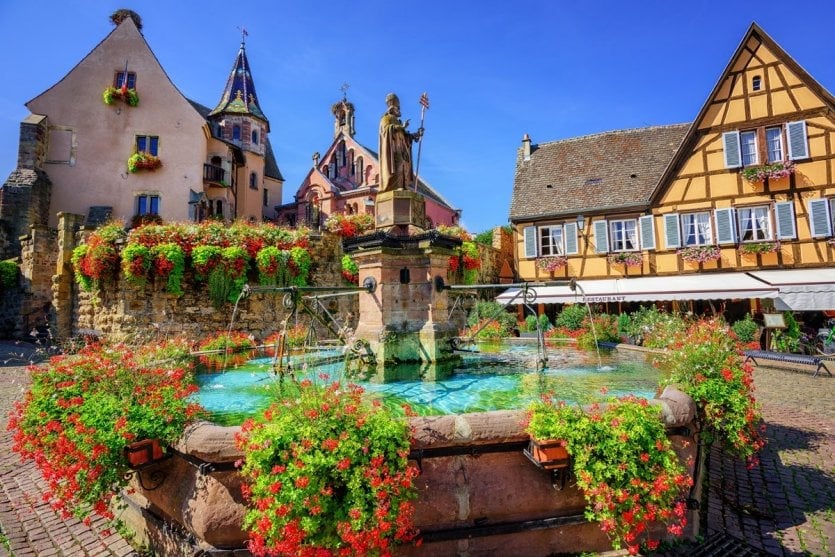
Eguisheim is one of those picture-postcard villages that's Alsatian to the core, with everything from half-timbered houses and medieval fortifications to fountains and balconies in bloom as soon as the sun comes out. And that's not all: Eguisheim is also one of the jewels in the crown of Alsace's wine culture, home to a number of world-renowned grands crus. You can take a leisurely tour of the area aboard a little white train, where you'll be given a wealth of historical information about the town. These features make Eguisheim one of the most beautiful villages in Alsace. Discover Alsace (the villages of Eguisheim, Kaysersberg, Ribeauvillé and Riquewihr) on this tour of the 4 wonders of Alsace !
2. Riquewihr, one of Alsace's most beautiful villages
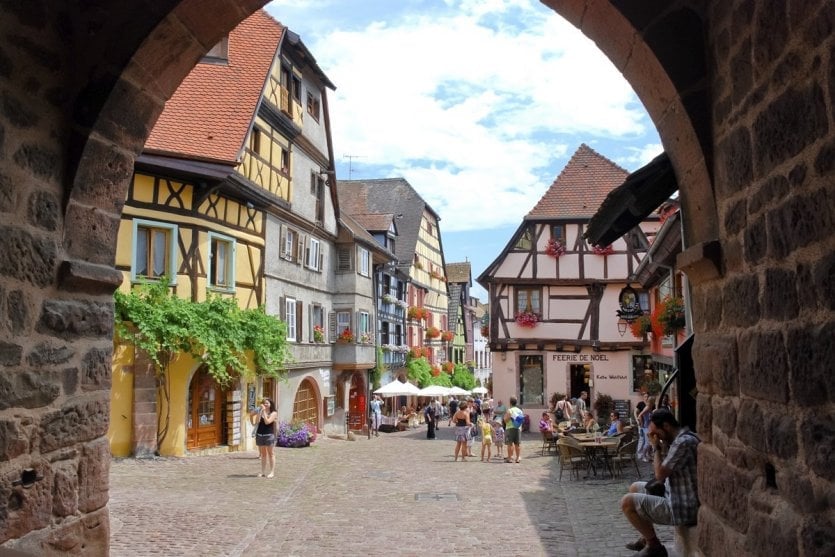
Riquewihr is listed as one of France's most beautiful villages, and for good reason. The village has had a rich and eventful history: first a fortified town in the Middle Ages, then prosperous thanks to grape growing and tourism, it now boasts almost 5 museums for 1,200 inhabitants! And it didn't become French until 1796. Riquewihr's charm is enhanced by its location at theheart of the Alsace wine route. A visit to the town is also a good opportunity to take in the surrounding vineyards and hillsides, and stop off at an estate for a wine tasting. If you don't want to miss a thing of Riquewihr, opt for a private private guided tour of the village !
3. Hunawihr, a charming Alsatian village
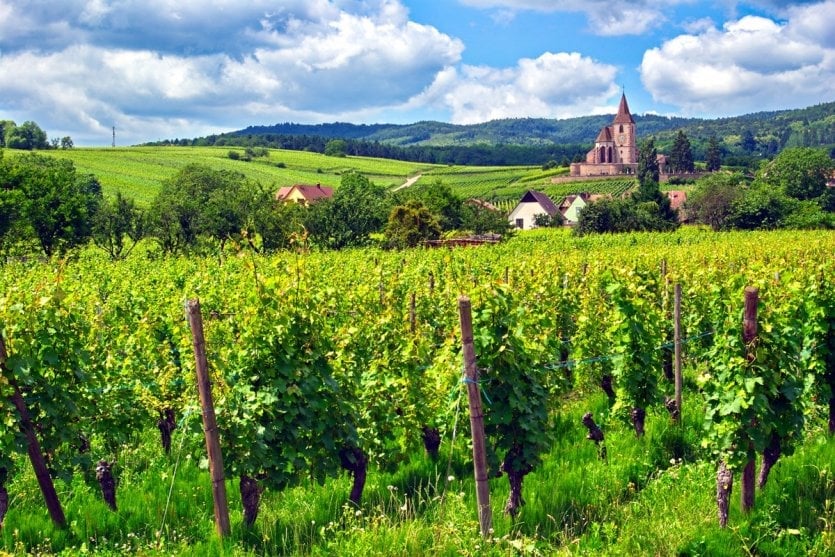
Situated in the Haut-Rhin region on the wine route between Riquewihr and Ribeauvillé, Hunawihr 's charm lies in its magnificent landscapes, with vineyards stretching as far as the eye can see. The church, a listed historic monument, welcomes both Catholics and Protestants - there's no distinction of faith in Hunawihr! Together with the cemetery, it is a fine example of a fortified church, and as the village never had ramparts, it served as a refuge for the population in case of danger. As you stroll through the streets, take time to admire the beautiful Alsatian houses. For children, the commune boasts a center for the reintroduction of storks and otters! Visit several villages, including Hunawihr, on this day tour of medieval villages, including wine tasting !
4. Mittelbergheim, on Alsace's Wine Route
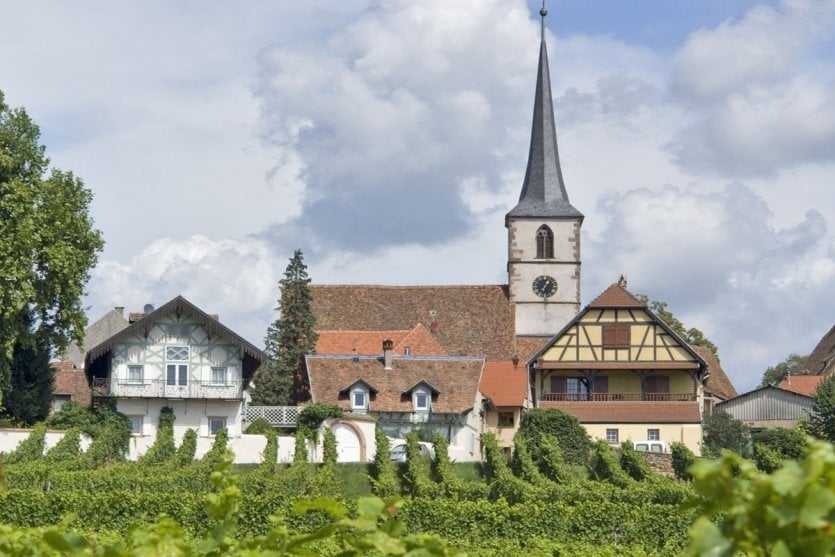
On the wine route, in the Barr region, lies another of the most beautiful villages in Alsace and France: Mittelbergheim. Mittelbergheim 's history is marked by wine production, and it boasts a remarkable cru: the grand cru Zotzenberg. The unity of style of the houses and monuments is remarkable. In this superb 17th- and 18th-century wine-growing village, every house and every stone tells a long story. Mittelbergheim is the starting point for numerous walks on the slopes of Mont Saint-Odile. And for those who have come for the quality of the wine, it's also possible to visit the village's estates, some of which even offer bed & breakfast accommodation. Live the Mittelbergheim experience to the full by opting for a day of day wine tasting and visits to 3 wineries from Strasbourg !
5. Hunspach and its half-timbered houses
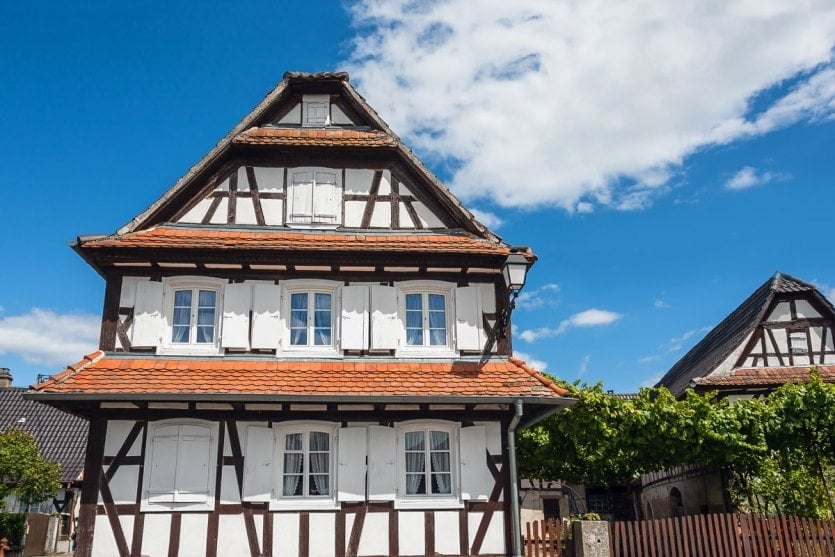
Hunspach is located in the Bas-Rhin region of France, in the Wissembourg area. One of the features of this sumptuous village is its white half-timbered houses on either side of the central street. There are also fine examples of the Napoleonic benches that women used to rest on with their baskets on their way home from the market. History buffs should head for Fort Schoenenbourg, located on the Maginot Line, which housed the most important artillery in Alsace. It is buried at a depth of no less than 22 meters! Hunspach has every reason to be included in our ranking of the most beautiful villages and towns in Alsace.
6. Colmar, Alsace's authentic village
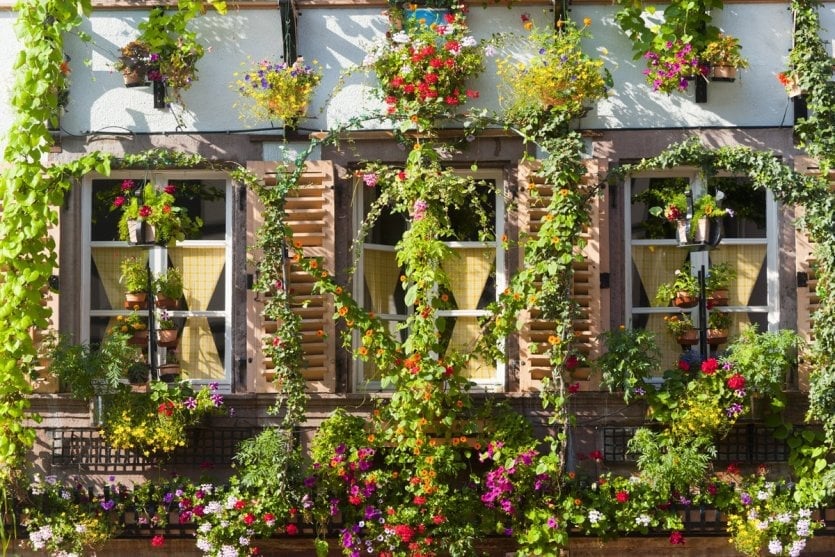
To speak of the beauty and authenticity of Alsace without mentioning Colmar would be a serious oversight. This thriving, serene city boasts a variety of fascinating architectural and cultural assets. Don't miss the Little Venice district, with its quintessentially Alsatian ambience, and the Maison des Têtes, built for merchant Anton Burger in the German Renaissance style. What follows is a leisurely stroll through the half-timbered streets, not forgetting to sit down at a restaurant table to sample the local gastronomy. To discover the town in an original way, you can rent flat-bottomed boats on the Lauch, the local river. Take advantage of your stay in Colmar to spend half a day on the Alsace wine route !
7. Thann, the village for legend-lovers
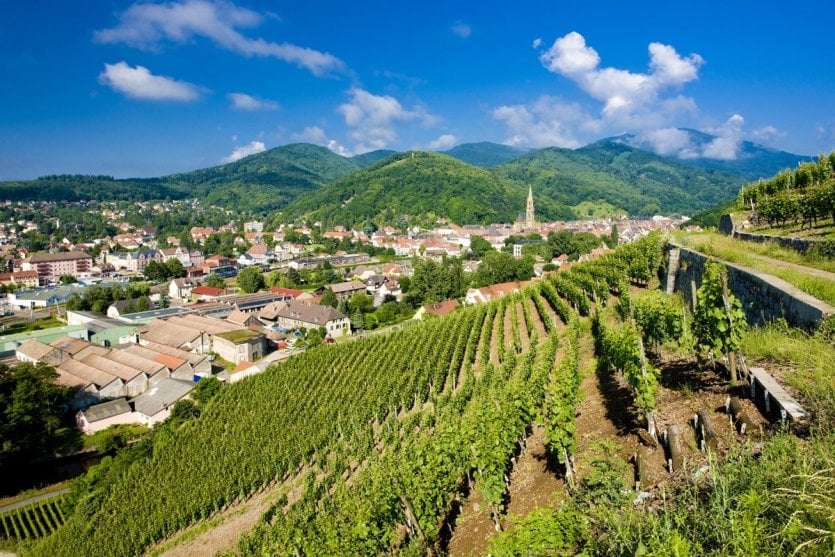
Thann is THE town for fans of fairytales and medieval history, thanks to its architecture, its history and, above all, its legends. Surrounded by vineyards, Thann is also home to the many half-timbered houses that give the town its distinctive atmosphere. And on the other side of the banks of the Thur, the local river, the ruins of a castle look strangely like a witch's eye watching over the town in the distance. The landscapes surrounding Thann are an inevitable invitation to stroll, and if you're lucky, you may even come across some roped-off winegrowers on one of your strolls, due to the steepness of the slopes surrounding the town.
8. Obernai, a typical Alsatian town
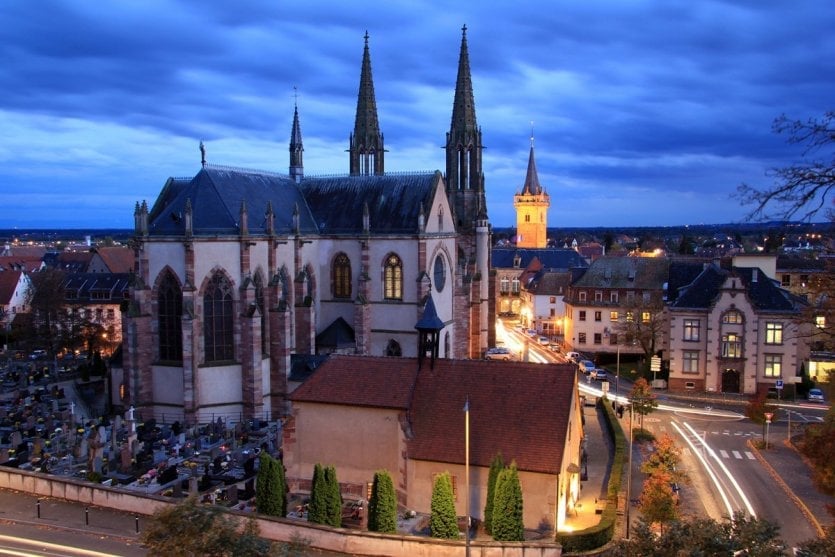
The birthplace of Saint Odile, patron saint of Alsace, Obernai is a typical Alsatian town. In terms of architecture, it resembles many of its sister towns, with the exception of its magnificent ramparts. These date from the 19th century and defend the town by forming a double wall at the foot of Mont Sainte-Odile. Some of the towers that once lined the ramparts are still standing, and in some cases have been integrated into the residential buildings. Obernai's Place du Marché is also well worth a visit, featuring the town hall dating back to 1370, a belfry made from the remains of a church destroyed in 1873, and a square tower remodeled during the Renaissance. Don't miss a thing of Obernai on this guided walking tour with wine tasting !
9. Wissembourg, a village of medieval charm
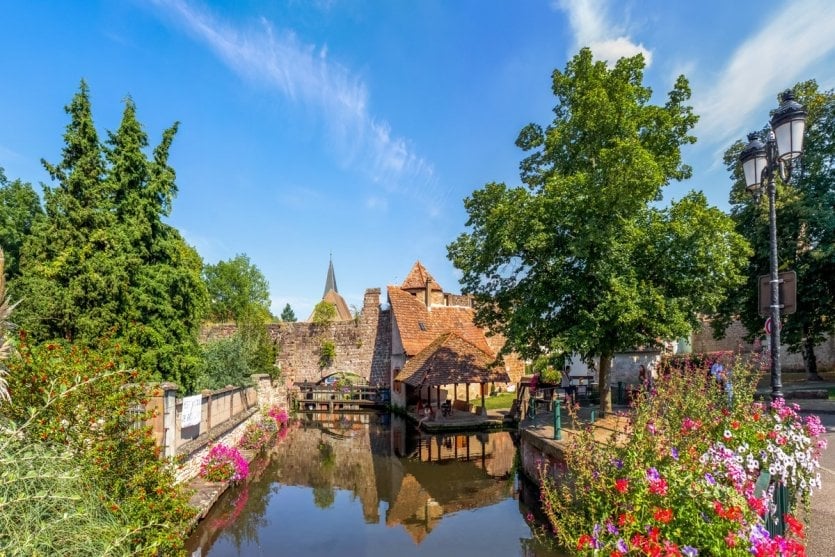
Wissembourg has preserved its Romanesque ambience and medieval charm to such an extent that it has been awarded the "100 plus beaux détours de France" label. The Saints-Pierre-et-Paul abbey church is representative of the town's history: it contains the oldest stained glass window in Alsace. Built in 1074, most of what remains today dates from the 13th century. And to add to the town's appeal, there's a legend that's well known to Alsatian children: that of Hans Trapp, or the bogeyman, who is said to have visited Wissemberg on Christmas Eve.
10. Strasbourg, one of Alsace's most beautiful cities
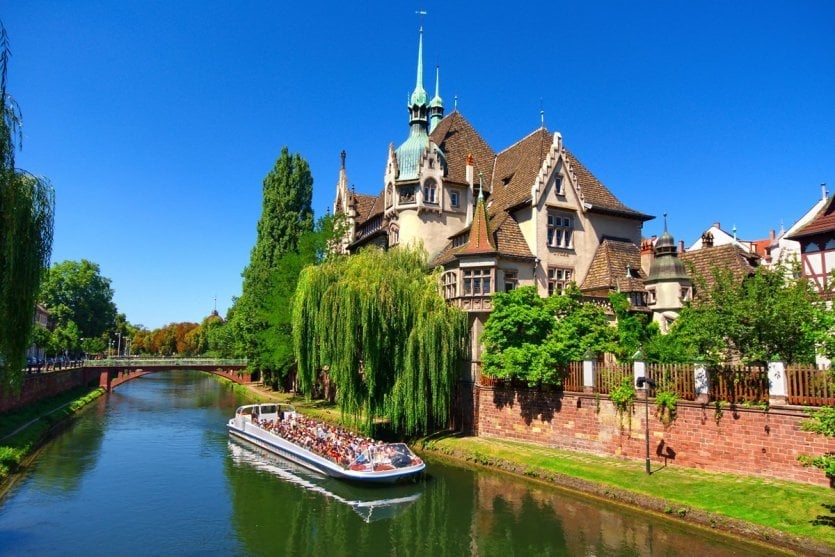
Strasbourg is one of the most beautiful cities in Alsace. A medieval city, it bears the marks of the passage of history. Initially a simple military camp called Argentorum, wiped off the map by the Huns, first German, then French, Strasbourg has since established itself as a cultural hub. Today, as the capital of Europe, a status it shares with Brussels, it boasts many points of interest: its cathedral and Christmas market, of course, but also the Petite France and Krutenau districts, and the Place de la République. And to appreciate the city's splendors from above, we recommend climbing the steps leading up to the tower platform of Strasbourg's splendid cathedral. Opt for an original approach with this private, guided boat tour of Strasbourg !
Are you planning a trip to Strasbourg and wondering what to do? Discover the 15 must-sees in Strasbourg !
11. Neuf-Brisach, a Unesco World Heritage village
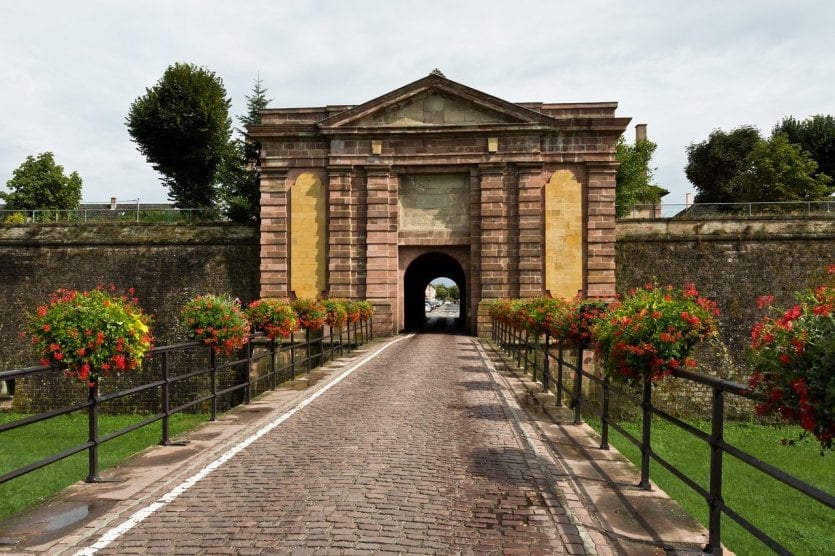
Listed as a Unesco World Heritage Site in 2008, Neuf-Brisach is a small town with anincredible wealth of historical treasures. Between 1698 and 1703, the famous Vauban, a specialist in poliorcetics (city siege techniques), supervised the construction of Neuf-Brisach. The aim was to fortify the French side of the river after France had returned the city of Breysach to Austria. In 1870, and again in 1945, the town was almost entirely destroyed, except for Vauban's work, which stood up valiantly to the bombs! The ramparts can be visited on foot: this 2.4 km walk will take you from the Porte de Colmar to the Porte de Belfort.
12. Turckheim and its old-roofed cottages
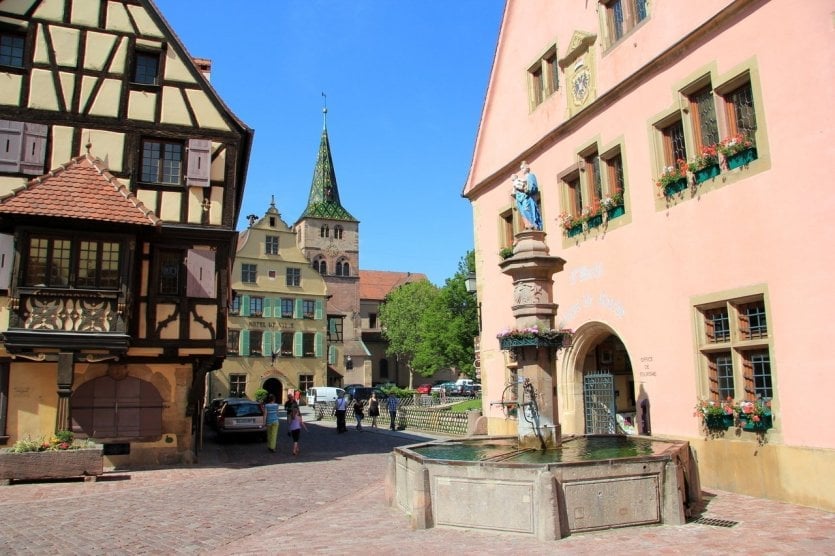
Turckheim is a typically Alsatian village, where you can admire the old-roofed houses where storks love to nest. Turckheim has also been famous for centuries for its wines, thanks in particular to the Brand vineyard, one of Alsace's 51 Grands Crus. Legend has it that a dragon emerged from the sea and fell asleep at the top of the Brand hill. The heat was so intense that its scales melted and the dragon bled to death. The blood then spread down the side of the Brand, penetrating the soil and fertilizing it to produce wines of exceptional purity. A stroll along the wine trail that crosses the Brand allows you to appreciate the architectural singularity of the commune, as well as the magnificent panorama that embraces the entrance to the Munster valley, the Hohlandsbourg castle and the vineyards at the mouth of the valley. Also worth a visit: the Turckheim wine cellar, one of the best in Alsace!
13. Kaysersberg, a small medieval village in Haut-Rhin
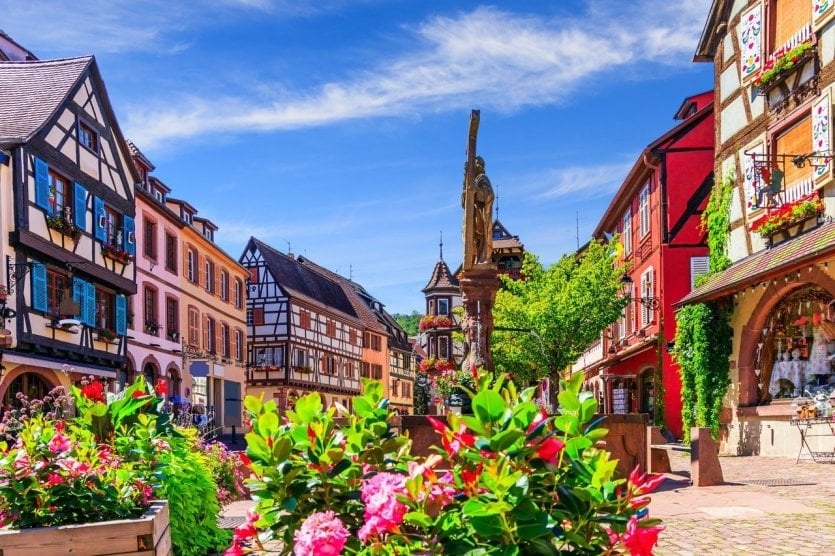
Situated on the Alsace Wine Route, Kaysersberg is a charming little medieval town that has preserved many of its beautiful vestiges from the past , and whose name means Emperor's Mountain. It was here that Albert Schweitzer, the Alsatian pastor who won the Nobel Peace Prize in 1952, was born. Stroll along its cobbled streets and admire the red sandstone church, the fortified bridge dating back to 1514, the romantic washhouse, the main cobbled street, the picturesque half-timbered houses that have been carefully preserved, the Renaissance town hall and the Sainte-Croix church with its beautiful Romanesque portal and, inside, a superb 16th-century carved altarpiece. You can also visit the dungeon of Kaysersberg's imperial castle, which overlooks the town.
14. Ribeauvillé, one of Alsace's most beautiful villages
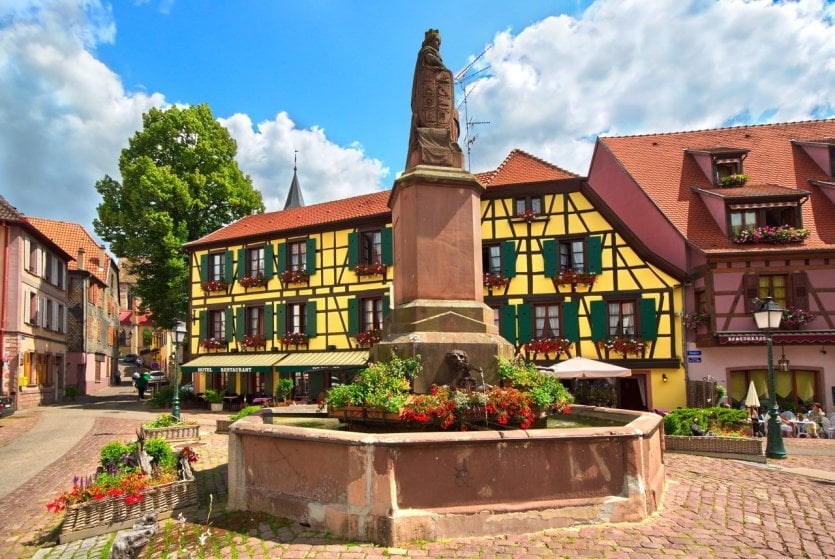
Dominated by the remains of three fortified castles built by the Ribeaupierre family, Ribeauvillé is unquestionably one of the most beautiful villages in Alsace! It was first mentioned in the 8th century under the name of "Radbaldovillare". In the 11th century, the Château de Ribeaupierre was built, followed two centuries later by the Castles of Girsberg and Saint-Ulrich. In the Middle Ages, the town was the seat of the Ribeaupierre family, the powerful seigneury that built these three castles. After the 17th century, the town became an important textile center , which underwent regular modernization. We recommend you take a look atthe magnificent half-timbered houses , which are a particularly good illustration of the wealth of the notables of the time.
15. Zellenberg, one of Alsace's most picturesque villages
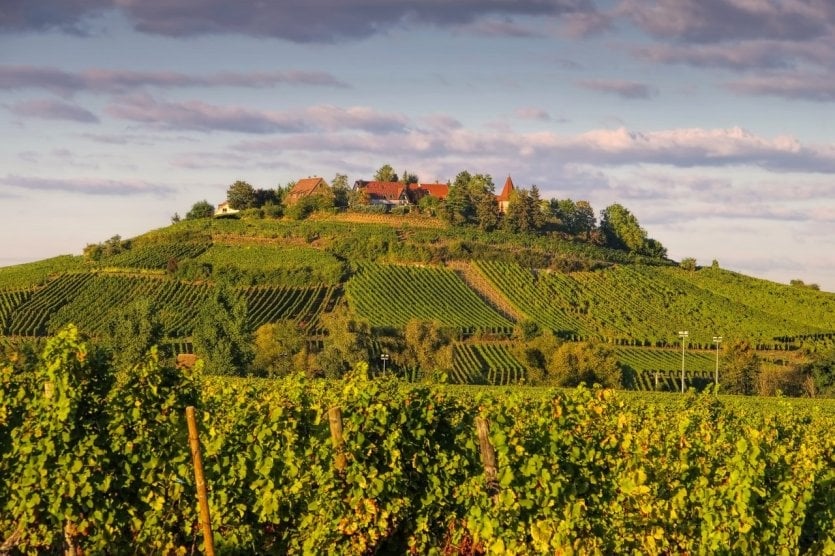
Set on a 285-metre-high hill, Zellenberg is an endlessly picturesque village that is a real eye-catcher on the Wine Route: it dominates the surrounding vineyards! We recommend that you follow the historical trail along the discovery path, where small signs provide historical information, particularly on the town's history during the time of the Ribeaupierre lords. The town is also known for its fine restaurants, but above all for its talented winegrowers who produce, among other wonders, the Grands Crus Froehn and Schoenenbourg.
What are the most beautiful villages to visit around Strasbourg?
Strasbourg is surrounded by many beautiful villages that are well worth a visit to discover the charm of Alsace. Here are 5 of the most beautiful villages to visit around Strasbourg:
-Located around 25 kilometers southwest of Strasbourg, Obernai is a picturesque town with well-preserved half-timbered houses, a beautiful market square and a medieval atmosphere.
-Just 25 kilometers west of Strasbourg, Molsheim is known for its medieval architecture, the church of Saint-Georges and its historic brewery, Brasserie de l'Abbaye de Saint-Léger.
-Around 25 kilometers west of Strasbourg, Wasselonne is another picturesque village with half-timbered houses, a medieval castle and a charming old town.
-Just a few kilometers northeast of Strasbourg, Wantzenau is a small town known for its pretty marina, canals and traditional houses.
-About 40 kilometers northwest of Strasbourg, Saverne is famous for its Château des Rohan, botanical gardens and historic atmosphere.
Which is the most beautiful town in Alsace?
After winning the title of "France's favorite village" in the 2022 France 3 TV show, the village of Bergheim has now been named "France's most beautiful village".
What's the best season to visit Alsace?
The best seasons to visit Alsace are spring (May-June) and autumn (September-October). These periods offer a favorable climate for enjoying the region, while limiting the number of tourists.


